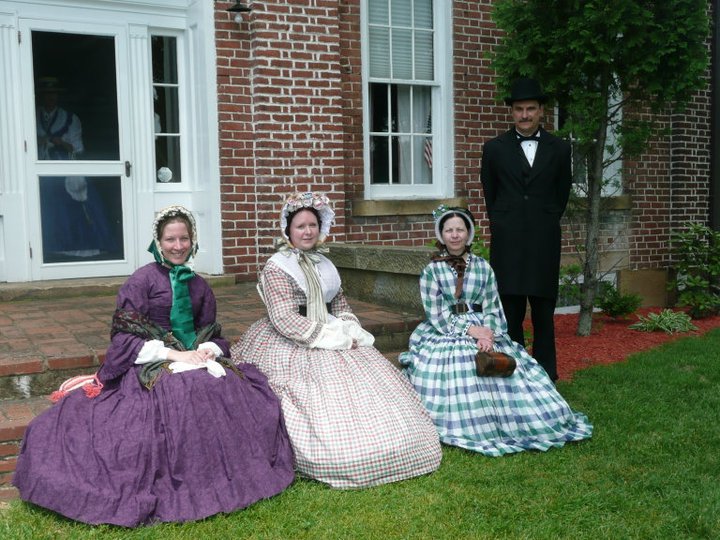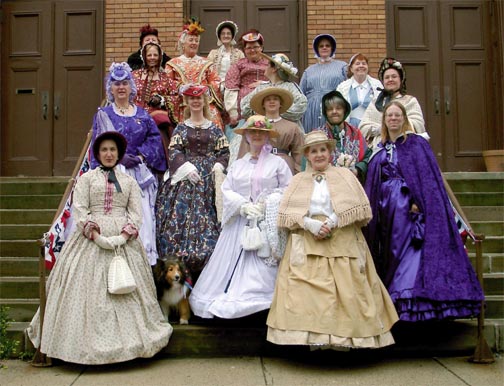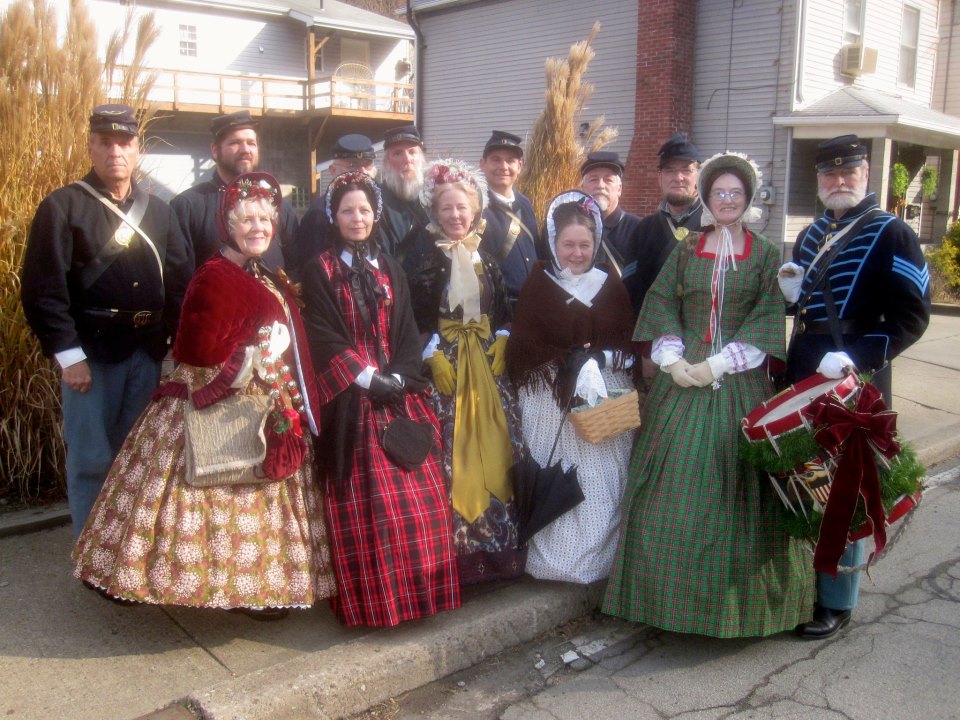
Welcome!
Welcome to the Civilian Committee of the 9th Pennsylvania Reserves, which includes both men and women. It is our hope to provide you with basic information to get started in reenacting while avoiding common mistakes made by many reenactors and to help you get the most out of reenacting.
A Brief History
Reenacting is an attempt to recreate the events and people of an earlier time period. While many time periods are recreated, the American Civil War is by far the most popular. There are more than 20,000 reenactors in North America alone. Since the conclusion of the 125th Anniversary events in 1990, there has been a tremendous increase in civilian reenactors, including women. It is now recognized by reenactors that the Civil War was not fought in a vacuum but that civilian populations were affected in profound ways and that interpreting the lives of Civilians is valid within the context of reenacting.
Not all living history programs are battles. Civilian scenarios or activities at historic homes or sites are becoming more common all the time. Civilian activities as interpretive programs are becoming more common.

It is very important to look at the reason you wish to do civilian reenacting. For many women it is because their husbands or significant others are involved with a military organization. For others it is because they have their own personal interest and agendas. Men may select civilian roles because they can no longer portray the military or because they no longer find it challenging. Some gentlemen choose to cross between civilian and military depending on the event.
There are many appropriate roles for civilians to portray. This will determine what you do and what you wear. You will need to be prepared to answer the question, “What are you and who do you portray?” (This is always asked of the authors and rarely asked of the Military!) Some appropriate roles for civilians include:
- A farmer’s family living near the site where the army is camped
- City folks visiting the armies during winter quarters
- Civilian contractors drumming up business from the army
- A delegation from the U.S. Sanitary and Christian Commissions
- Laundress
- Nurse
Once having selected your role, read all you can on the topic. Visit the local library to find books on the subject. Also don’t forget to ask fellow reenactors. They are excellent sources for information. Besides, you make new lifelong friends that way (comrades in arms so to speak!). Then begin to work on your impression (discussed in depth later in this manual). Finally begin on the costume research. A word to the wise. To avoid the common mistakes made by the authors and many other veteran reenactors, don’t rush out and buy the first outfit or pattern from the many available merchants. These merchants are in this to make money and will sell anything and call it authentic. Take your time. It should take about a year to get everything together. Remember you are working on your impression, how you look, feel, think, and act. It may require a change of mindset to pull it all together.

The below links are exceptional resources to learn more, but sometimes the best way is to talk with an experienced reenactor with the 9th PA Reserves!
Visit our How to Join page to contact us an learn more, or check out the Links below!
General Considerations and Your Impression
Men’s Clothing
Women’s Clothing and Undergarments
Accessories
Quality Sutler Recommendations